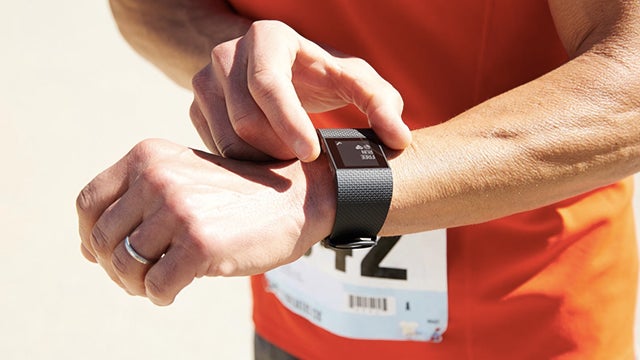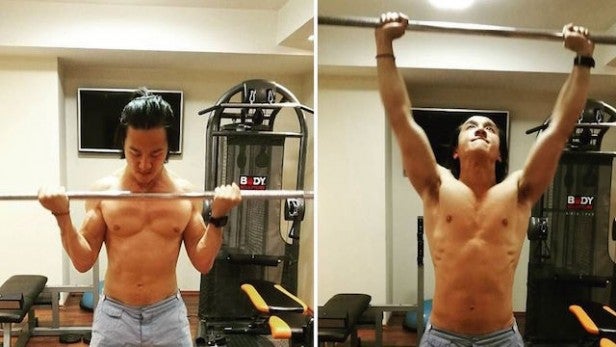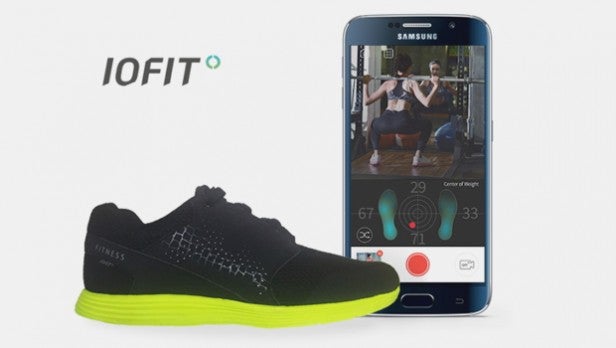Tech has made personal trainers redundant – here’s why

OPINION
TrustedReviews’ new Wearables and Fitness Editor, Richard Easton, on why the vast majority of people don’t need to fork out on expensive personal trainers
Starting out on any sort of fitness regime can be an intimidating and confusing process, but the fact that you’re even thinking about making a positive lifestyle change should be commended. So well done, you’ve already made the all-important first step.
What now? For the fortunate few, you might know someone who’s already an avid runner, a well-seasoned swimmer or a veteran of the weight room, and they can help get you started. But not everyone is so lucky, and your first thought may be to look to a personal trainer for help.
Then you look at the cost of booking a few sessions and suddenly you start doubting whether this new fitness endeavour is for you. What if you don’t end up following through and all that money evaporates faster than the (theoretical) sweat from your brow?
The financial cost of getting fit and healthy can certainly be a big investment but
Between the raft of apps, online resources, fitness communities and YouTube videos, you have a wealth of knowledge available for free to get you started. Whether you’re getting into running, powerlifting, swimming or any number of other sports, here’s how to get started.
Pumping iron
As much as anything, this is a story of my own health and fitness journey. While I’m a reasonably avid runner, my primary focus for the last six years or so has been powerlifting and the pursuit of strength. Like so many others, I was self-taught through a combination of watching form videos on YouTube, trawling through online forums for advice and using apps such as StrongLifts and Fitocracy to track my progress and find ongoing motivation.
Both StrongLifts and Fitocracy have form videos and advice built directly into their apps, with training programmes and a way to track progress, so they’re a fantastic way to get started. Hitting the weight room can be a little scary due to worries over form and fear of injury, but a good programme will start you out on a suitable weight that mitigates any of these risks. Then, over time, you add weight to the bar as you become more comfortable and familiar with form and technique in something called ‘linear progression’.
If you want to get extra fancy, you can break out your smartphone or GoPro and record your lifts in high frame rate video so you can play them back in slow motion. This will give you an easy way to dissect the mechanics of some of the more complicated lifts such as the snatch. Upload these somewhere online and you can share them on forums for advice.
In those subsequent six years since starting out, I’ve hit certain powerlifting milestones for the ‘big three’. My lifts currently sit at a 100kg bench press, 147.5kg squat and 187.5kg deadlift while at a bodyweight of 62kg. This might read like a stealth brag but, while I am quite proud of those achievements, they’re genuinely things I believe most people could achieve with a little grit and correct guidance.

Born to run
But what if you’re not interested in pumping iron and want to get started on running? Technology has you covered there, too. Obviously, there are plenty of fitness trackers out there designed to get you moving. If you lead a substantially sedentary lifestyle, then just walking more is a great first step and any fitness tracker, whether that’s something from Fitbit, Withings, Jawbone or Misfit, will do the job. These can all help with simply motivating you to get those extra steps during your day in order to hit your targets.
Anecdotally, my 70-year-old mother is a prime example of this. Equipped with Fitbit’s most basic Flex tracker, suddenly the positive feedback of hitting her goal just to light up the little LEDs on the device was enough to get her out walking more often, though I may or may not have also gradually been increasing her target without telling her. You really can apply linear progression to anything.
Related: Best fitness trackers
The next step is to start actually running and any fitness tracker worth its salt will be a fantastic asset here, too. If you’re not interested in picking up a fitness tracker, alternatively there’s a massive selection of running apps available such as Strava or Runkeeper. If you’re looking for a beginner’s programme to start building up the miles then Couch to 5K is a popular way to get started (it really took a Ronseal approach to picking its name), and there’s a mobile companion app as well.
Watch: Hands-on with the Fitbit Blaze
You are what you eat
Diet and nutrition are just as important as working out when it comes to getting fitter. There are plenty of ways to track and monitor what you’re putting in your body as well as get advice on what you should be consuming for your goals. Calorie counters from MyFitnessPal or Lose It! are both excellent choices with well fleshed out food databases and the means to keep track of your macros (that’s your protein, carbohydrate and fat intake for the uninitiated).
Once you’ve started in lifting, running, swimming or whatever sport it is you’re interested in, and you’re beginning to take things a little more seriously, there are still plenty of gadgets available to make sure you keep hitting your goals. Something like the Skulpt Chisel can help you get a gauge on your bodyfat percentage and lean muscle levels.
A device like the MyZone MZ-3 measures your effort levels, something that a human personal trainer can’t necessarily do as effectively. Then there are wearables such as the Whoop or CheckMyLevel that are geared towards monitoring recovery levels so you can make sure you’re not over- or under-training and continue to perform optimally.
I genuinely believe in the near future, wearable technology will have matured to the point that we’ll have sensors that can more accurately and easily tell us our glutes aren’t firing adequately during a deadlift, or that an extra 30 minutes of sleep will equate to a 5% performance increase while swimming laps.
Already, such things exist, but they’re not exactly consumer-friendly in the same way general fitness trackers are, at least not yet. Samsung is financially supporting the IOFIT, a smart pair of trainers that can be used to monitor your force exertion through your feet, perfect for monitoring your power output during squats and deadlifts, or even for golf where your feet play such a vital role. Then there’s the Heddoko movement tracking system and Athos smart apparel, though the latter is currently only available in the US.

To PT or not to PT
But back to my point on personal trainers.
For every excellent trainer who tailors their workouts to each client and genuinely gets them excited and motivated with great results, there’s another who effectively cuts and pastes across clients or throws in haphazardly changing workouts designed to promote ‘muscle confusion’ – or whatever wild claim is being banded about. Sometimes, in reality, PTs just want to keep changing the workout to create an ongoing dependency to ensure continuing business, rather than delivering an effective workout plan their client can simply stick to for successful results.
But getting all your guidance online isn’t without its faults as well. A good personal trainer will hopefully have the necessary qualifications and experience to give you good advice, something you might not always get from Joe Bloggs on an internet forum. So as always, take everything you read online with a degree of cynicism (even this article if you wish).
The internet is actually proving an opportunity for personal trainers, however, and many are taking to online consulting to broaden their reach, so it’s not all doom and gloom. There are plenty of online coaches who can give you solid advice as well as analyse and scrutinise your form videos from halfway across the world.
We’re in for exciting times ahead where it comes to wearables and apps, but don’t let that stop you from getting started right now. If you feel a personal trainer is what you need to get started, that’s obviously totally fine, just don’t overlook a DIY approach – especially when you’re taking your first steps. Even if you do invest in some tech to help out, it will still likely work out less expensive than a few PT sessions.
Now all you need to do is get out there and get started.
Watch The Refresh: The latest tech gossip every week
What do you think? Is the human element still necessary or can tech take over? Let us know in the comments below.


